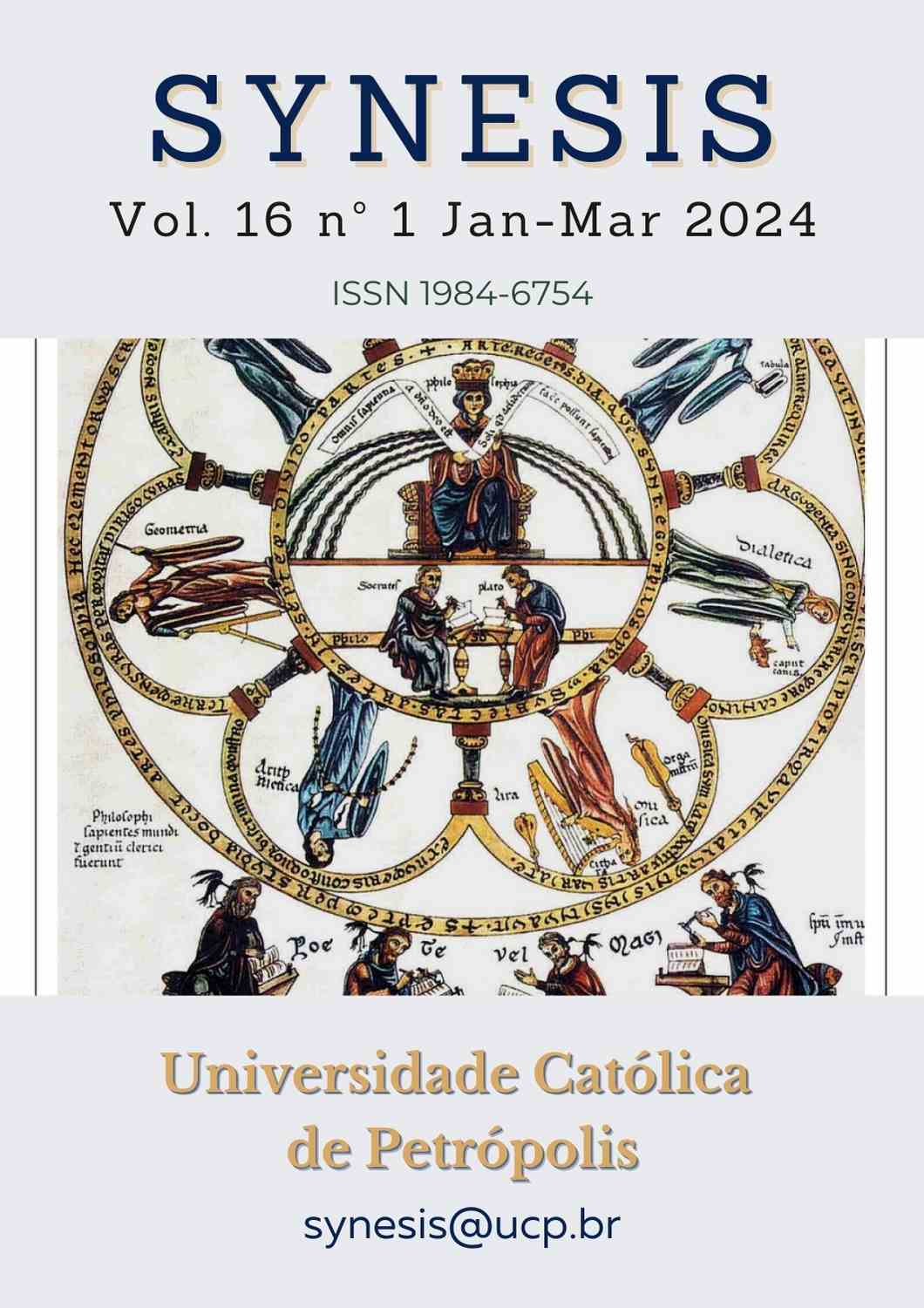Resumo
Este artigo analisa a transferência cultural na tradução. Ao explorar abordagens inovadoras para preservar os aspectos interculturais de um texto, recorremos ao conceito de cultura. O conceito de cultura decorre da diversidade de fenômenos e realidades que ele abrange e denota na fala de falantes nativos e na metalinguagem de pesquisadores de várias disciplinas que o utilizam. Sem conceder a ele o status de um termo unificador, o artigo levanta a hipótese de que cultura é um conceito itinerante e interdisciplinar usado na sociologia, no direito comparado, nos estudos culturais, nos estudos de tradução, na linguística pragmática e na comunicação interlinguística como uma unidade para a transferência cultural de conceitos. O artigo define o conceito de culturama, baseando-se em pesquisas de outras áreas, e considera suas características como uma unidade mínima e autônoma responsável pela transferência cultural na tradução, carregando informações culturais e sendo uma "resistência" para a tradução intercultural, que não é equivalente à transferência interlíngue. Uma unidade mínima de significado, não necessariamente reduzida ao monolinguismo, cultural também desenvolve nuances relacionadas, um número de nuances significativas que ainda são pouco compreendidas. Os resultados do estudo mostram sua dependência do contexto sociocultural, de uma situação específica de comunicação. Classificamos as culturas em históricas, culturais e literárias, e as dividimos em simples e compostas. Além disso, distinguimos entre culturas fixas no léxico, que se referem a uma situação já conhecida, como clichês, provérbios, expressões idiomáticas, e culturas fixas em uma obra literária, que às vezes são derivadas alusivamente da categoria anterior. Por estar na fronteira entre a citação e a alusão, o último tipo de signo cultural evita a identificação - implicitamente, a comunicação por meio da tradução não ocorre - ou é deliberadamente distorcido pelo próprio tradutor para obter o efeito evocativo esperado na tradução ou é inadequadamente "preservado".
Referências
ALIC, LILIANA. Culturemes, agentivity, contyrastivity. Redefining Community in Intercultural Context, 9.1, 81-86, 2020. https://www.ceeol.com/search/article-detail?id=874356
ARDELEAN, CARMEN. Relevance of the Cultural Transfer in Translation: False Friends in Media Sources. Scientific Bulletin of the Politehnica University of Timisoara, Transactions on Modern Languages, 1, 18, 2019. http://www.sc.upt.ro/attachments/article/298/07%20Ardelean.pdf
BAKER, WILL. From intercultural to transcultural communication. Language and Intercultural Communication, 22.3, 280-293, 2022. https://doi.org/10.1080/14708477.2021.2001477
COMAN, DANIEL; CORINA SELEJAN. The Limits of (Un) translatability: Culturemes in Translation Practice. Transylvanian Review 28, 2019. https://www.researchgate.net/publication/336275616_The_Limits_of_Untranslatability_Culturemes_in_Translation_Practice
DEMİREL, HAKAN HILMI; KORKUT ULUÇ İŞİSAĞ. Cross-Cultural Transference in Translation: Translator Preferences in Translating Cultural Elements from Turkish to English in Madonna in a Fur Coat By Sabahattin Ali. International Journal of Educational Technology and Learning, 5.1, 1-8, 2019. https://doi.org/10.20448/2003.51.1.8
DEMIRYAY, N. Literary translation as a form of conveying cultural aspects (an approach to translatability from from german into turkish). Synesis (ISSN 1984-6754), [S. l.], v. 14, n. 2, p. 383–395, 2022. Disponível em: https://seer.ucp.br/seer/index.php/synesis/article/view/2337. Acesso em: 20 sep. 2023.
EYSTEINSSON, ÁSTRÁÐUR; INGIBJÖRG ÞÓRISDÓTTIR. Early Icelandic translations of Shakespeare Settings, contexts, cultural transfer. Reconstructing Shakespeare in the Nordic Countries: National Revival and Interwar Politics, 1870–1940, 35, 2023. https://doi.org/10.3167/cs.2023.350401
FERRI, GIULIANA. The master’s tools will never dismantle the master’s house: Decolonising intercultural communication. Language and Intercultural Communication, 22.3, 381-390, 2022. https://doi.org/10.1080/14708477.2022.2046019
GREBENNIKOVA, V.; BONKALO, T.; RUDENKO, E.; US, O.; MALKOV, A. Spiritual and moral sovereignty of personality in information society: A subjective environmental approach. Synesis (ISSN 1984-6754), [S. l.], v. 15, n. 4, p. 100–112, 2023. Disponível em: https://seer.ucp.br/seer/index.php/synesis/article/view/2722. Acesso em: 20 sep. 2023.
HONG VAN, V. Education Patriotism from Education of Traditional Cultural Values Synesis (ISSN 1984-6754), [S. l.], v. 14, n. 2, p. 119–134, 2022. Disponível em: https://seer.ucp.br/seer/index.php/synesis/article/view/2196. Acesso em: 20 set. 2023.
IMOLA, NAGY. From realia to culturemes. The problem of culture-bound words in translation. The dialogue of multicultural discourses, 569, 2020. https://ibn.idsi.md/sites/default/files/imag_file/LDMD-08%20Lite_2020.pdf#page=569
JALILBAYLI, OGTAY B. Forecasting the prospects for innovative changes in the development of future linguistic education for the XXI century: the choice of optimal strategies. Futurity Education, 2.4, 36-43, 2022. https://doi.org/10.57125/FED.2022.25.12.0.4
JALILBAYLI, OGTAY B. Philosophy of linguistic culture and new perspectives in modern azerbaijani linguistics. Futurity Philosophy, 1.4, 53-65, 2022. https://doi.org/10.57125/FP.2022.12.30.05
KHARITONENKO, LESIA. Innovations and traditions in Ukrainian language teaching at the educational establishments of Ukraine: cases, models of the future. Futurity Education, 2.1, 57-71, 2022. https://doi.org/10.57125/FED.2022.25.03.7
POLEZHAEV, YURYI. Cultural literacy as a linguistic didactic category. Pedagogical sciences, theory, history, innovative technologies, No. 10, C. 147-157, 2021 https://doi.org/10.24139/2312-5993/2021.10/147-157
PRASAD, K.; VAIDYA, R. The application of learning analytics to support the students in higher education. Synesis (ISSN 1984-6754), [S. l.], v. 15, n. 1, p. 183–194, 2023. Disponível em: https://seer.ucp.br/seer/index.php/synesis/article/view/2441. Acesso em: 20 sep. 2023.
SOFILKANYCH, MARYNA. The formation of a new information culture of the future: the socio-philosophical content. Futurity Philosophy, 1.1, 56-67, 2022. https://doi.org/10.57125/FP.2022.03.30.05
VAKHOVSKA, OLHA, AND OLHA ISAIENKO. Language, culture, and image-driven interpretations in translation: A case for the university translation classroom in Ukraine. Revista Amazonia Investiga, 10.47, 240-249, 2021. https://dialnet.unirioja.es/servlet/articulo?codigo=8320623
VAN DE POL-TEGGE, ANJA. Cultural transfer and the sociology of translation: A processual approach. Translation in Society, 2023. https://doi.org/10.1075/tris.23005.van
YENIASIR, M.; GÖKBULUT, B.; KURT, E. The impact of children’s novels on values education: the cases of "The children of the Green Island" and "Tarajar beyond the seas". Synesis (ISSN 1984-6754), [S. l.], v. 15, n. 1, p. 220–234, 2023. Disponível em: https://seer.ucp.br/seer/index.php/synesis/article/view/2461. Acesso em: 20 sep. 2023.

Este trabalho está licenciado sob uma licença Creative Commons Attribution-NonCommercial-NoDerivatives 4.0 International License.
Copyright (c) 2023 Synesis (ISSN 1984-6754)

